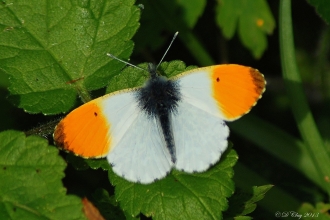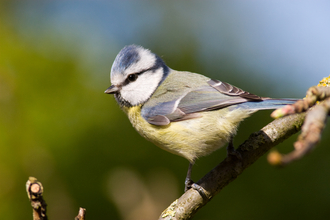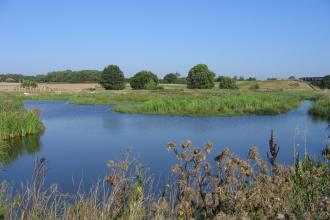Carr Vale, Derbyshire Wildlife Trust

Yellowhammer, Richard Smith

Skylark, Amy Lewis
Location
Know before you go
Dogs
When to visit
Opening times
Open at all times.Fishing closed season from 16th March to 30th June
Best time to visit
All year round - Summer for sand martins and dragonflies and winter for wintering ducksAbout the reserve
This wetland reserve is a great place for birdwatching. The mixture of open water, marsh, wet and dry grassland, scrub and trees attracts a rich variety of birds throughout the year.
In winter large numbers of wildfowl feed in the wetlands and surrounding grasslands. Large flocks of wigeon graze the banks while teal can be seen preening and feeding on the water's edge. As well as wildfowl, the reserve attracts wintering flocks of finches and buntings, which feed along the field boundaries. A more secretive winter visitor is the water rail, which skulks above the marsh areas. More often heard than seen, it has a distinctive squealing call.
Spring and autumn are important times on the reserve, as many birds are on migration and Carr Vale is an ideal place for them to feed and roost. In September, swallows gather in the marsh, in a roost of between 1-2,000 birds. They usually attract hobbies, birds of prey which are skilled hunters on the wing. In early summer the marsh and scrub are home to a range of breeding birds, including reed and sedge warblers, whitethroat, yellowhammer, moorhen and gadwall.
The grassland provides nesting habitat for the nationally declining skylark. The marker on the map below shows the access point after you have walked through Derbyshire County Council's Peter Fiddler Reserve.
Contact us
Take a look at the latest sightings

Sightings Blog - 2022 Blog #7
Your wildlife sightings in early April 2022
Sightings Blog - 2022 Blog #6
Your wildlife sightings in Derbyshire in late March 2022

Sightings Blog - 2022 Blog #5
Your wildlife sightings in Derbyshire in early March 2022
Sightings Blog - 2022 Blog #3
Your wildlife sightings in Derbyshire in Derbyshire in Late January & Early February
Sightings Blog - 2022 Blog #4
Your wildlife sightings in Derbyshire in Mid and Late February 2022

Sightings Blog - 2022 Blog #2
Your wildlife sightings in Derbyshire in Mid January 2022
Nearby nature reserves
Download our nature reserve leaflets
Check out the reserve map
Carr Vale reserve map
Play Wild rating
Take extra care.




